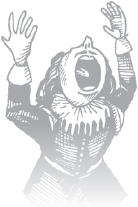

In the seventeenth century, music continued to serve very specific roles: secular music to be performed for social events, entertainment, the chamber, and theatre and sacred music to be performed in churches. Italy's role as a leader in musical innovation in Europe continued to flourish in the seventeenth century, both in chamber music and church music. While opera was the main focus of musical culture in Venice, the rest of Italy enjoyed a surge in secular music that was designed for small audiences. Music involved ensembles of voices and instruments for amateur musicians and the listening enjoyment of their peers. While strophic songs continued to be popular with the masses, the elite enjoyed vocal chamber music in a variety of forms and styles, many of which combined characteristics of madrigal, dance music, and dramatic music.
A survey of music history limits the ability to do justice to all forms of secular vocal music in the seventeenth century, so this chapter will focus on the three principal developments in song: concertato works, basso ostinato, and the cantata. In the previous chapter we learned that the concertato medium employed both voices and instruments playing individual parts. Italian composers churned out thousands of pieces for voice and accompanying basso continuo, sometimes with additional instruments. While many of the works were composed for one to three voices, some featured as many as six voices (and sometimes more!). Many of these songs were known much more widely than the operas of the time, and thus they became the music of the people.
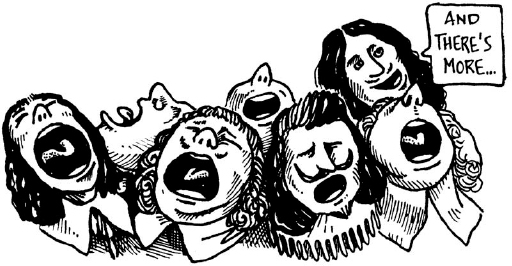
The concerted madrigal, in particular, marks a major departure from the unaccompanied, polyphonic madrigal of the Renaissance. While styles ranged from imitative polyphony mirroring the sixteenth century to the stile concitato (the “excited style”) of the seventeenth century, nearly all of these concerted madrigals employed a basso continuo. These madrigals were often set for one to three voices, but they occasionally called for additional instruments, resulting in instrumental introductions and ritornellos.
Of these concerted works, a number of them employed a technique called basso ostinato (also known as a ground bass). The basso ostinato was a compositional method where a short pattern in the bass would be repeated continuously over an ever-changing melody and harmony above it. The Italians don't get full credit for this one—the technique had already been in use for many years in the popular songs of Spain as well. Specific types of ground bass include the lament bass (a descending pattern of four notes known as a descending tetrachord) and the chacona (a lively dance-song form brought from Latin America to Spain and eventually to Italy). The descending tetrachord was called a lament bass because the pattern of falling pitches conveyed a sense of hopeless sorrow. The chacona (ciaccona in Italian), in contrast, was lively and upbeat.
Perhaps the most important genre of vocal music to emerge from the mid-seventeenth century was the cantata, which in Italian means “to be sung.” Early in the century, the term would apply primarily to secular vocal works, accompanied by continuo and usually for solo voice, that were either lyrical or even dramatic in nature. Leading composers of secular cantatas in the mid-1600s included Antonio Cesti, Giacomo Carissimi, and Barbara Strozzi. Eventually the cantata will become a form of vocal music in the church as well, most notably in the church music of J. S. Bach.

The continued independence of instruments from their vocal counterparts led to an increasing number of compositions intended solely for instrumental performance. Of course, the types and forms of instrumental music varied from nationality to nationality, but there are a number of types of compositions that were pervasive across Europe. Some of the most important forms of instrumental music of the mid-seventeenth century include the toccata, the ricercare and fugue, the keyboard fantasia, the sonata, and the chorale prelude.
The toccata of the Baroque did not vary much from the toccata of the late Renaissance except in terms of using tonal harmonies as opposed to using church modes. The ricercare and fugue were quite similar in the seventeenth century, both being very serious compositions based on a subject or theme that would be continuously developed and imitated throughout the course of the composition. While the ricercare will eventually fall out of fashion, the fugue will become an important staple of the late seventeenth and early eighteenth centuries and an inspiration for composers in the centuries to follow. The keyboard fantasia, an imitative work like the ricercare, had a much more complex formal organization than either the ricercare or toccata, and it was also much larger in scale and scope.
The sonata was a very broadly used term in the seventeenth century, referring to virtually any composition for instruments. From the Italian sonare “to be heard,” sonatas of the seventeenth century often consisted of a work for one or two treble instruments plus basso continuo. Violins were the instrument of choice for sonatas of this time, and the sonata itself was usually composed to show off the particular nuances of the instrument for which it was composed. The other important instrumental composition in the early Baroque was the chorale prelude, an improvisational work for organ that was based on an existing chant or hymn tune. Both of these terms (sonata and chorale prelude) will continue to be used to describe instrumental compositions for many years to come.
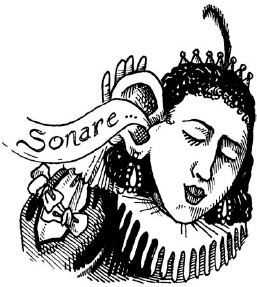
Alongside the developments in secular music, the church played a major role in the invention new forms and genres of sacred music. The sacred concerto was one of the leading genres of sacred music of the time, adopting a theatrical element to the setting of religious texts accompanied by basso continuo and incorporating elements of the concertato medium and operatic styles. The church sought a dramatic, effective means for communicating the message of the church through music, and the sacred concerto filled this role effectively and persuasively. The sacred concerto took both large-scale forms, written for multiple choirs and instruments, and small-scale forms, involving one or more soloists accompanied by organ and instrument or two. All sacred music of the time, including the sacred concerto, employed compositional styles of the Renaissance (now known as the stile antico or “old style”) and more modern compositional styles (known as the stile moderno).
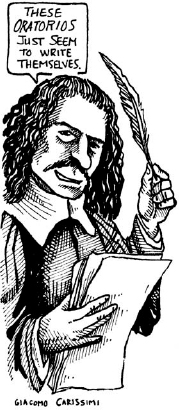
In seventeenth-century Rome a new genre of dramatic religious music emerged in the form of the oratorio. The name comes from the Italian word oratorio, which referred to a small prayer hall where the laity would gather to pray, listen to sermons, and sing devotional songs. The oratorio was revolutionary in that it combined elements of narrative, dialogue, and commentary, all in the form of music. At first this might seem similar to opera, which it was, but there were several important differences. One, the oratorio was always religious in nature. Two, the oratorio was seldom staged, if ever, and the action of the drama was never acted out as it was in opera. In the early Baroque, the leading composer of oratorio was Giacomo Carissimi (1605-1674), and the form would blossom in the late Baroque in the compositions of G. F. Handel and in the Classical period in the music of Franz Joseph Haydn.
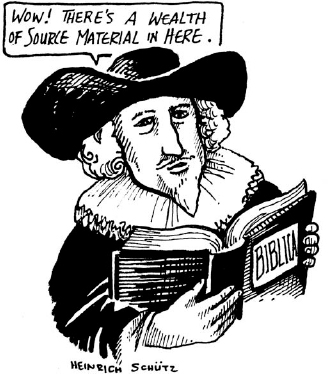
In the Lutheran church, Heinrich Schütz (1585-1672) proved to be the leading master of Italian styles. His output of sacred music included collections of psalm settings and other sacred songs, most notably his Psalms of David and Cantiones sacrae. Schütz also composed large-scale musical works, such as his large-scale concerto Saul, was verfolgst du mich for two choirs of voices and instruments, six vocal soloists, two violins, and basso continuo. A prominent genre in which Schutz composed was the historia, a musical composition based on a biblical story. He composed historia based on the Christmas story, as well as The Seven Last Words of Christ. The most popular and common type of historia was the passion, which recalled the suffering and death of Jesus' crucifixion. The passion will become an important genre in the music of later Baroque composers and again in the twentieth century.